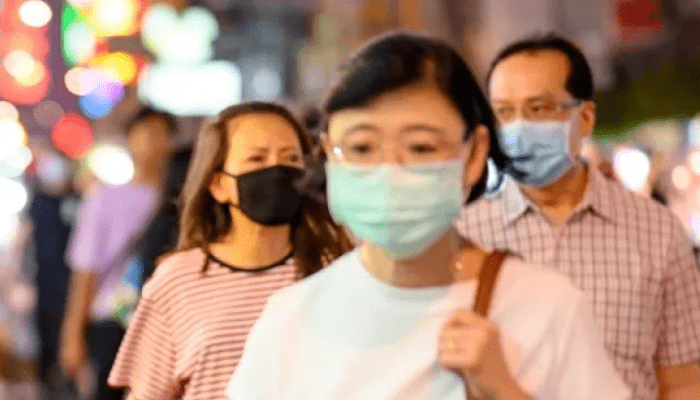
MSD report: “Pandemic 2.0” Might Have Significant Impact on Asia-Pacific Economy
According to a report, important markets in the region may have to bear a significantly more severe economic burden if the scenario were to get worse when Covid-19 infections start to increase in the Asia-Pacific region.
In this envisioned “Pandemic 2.0” scenario, the economic burden on five major markets – Singapore, Hong Kong, Taiwan, Australia, and South Korea – would range from 2.5 to 5.5 percent of gross domestic product, according to a South China Morning Post article citing a report released by US pharmaceutical company MSD.
More than three years after its initial designation, the World Health Organization revoked the worldwide emergency status for COVID-19 on May 5 and stated that nations should now handle the virus that killed more than 6.9 million people along with other infectious diseases.
While medical professionals in Hong Kong continue to urge residents to exercise caution, data from Singapore’s health ministry show that the number of Covid-19 hospitalizations has steadily increased over the past eight weeks, according to South China Morning Post.
Concerns about overcrowded hospitals in the Southeast Asian nations have also been highlighted by an increase in cases in Malaysia and the Philippines.
According to MSD’s media spokesman Garry Daniels, “we can’t predict what that [a Pandemic 2.0] will look like, but there is still potential for additional waves and for new variants emerging as well.”
“We need to be prepared that the pandemic could evolve in a way that we are not potentially expecting,” Daniels continued. “It is to reframe the conversation with some of those decision-makers and policymakers.”
According to the MSD research, Hong Kong’s predicted annual economic losses for a pandemic that persisted would be US$5.3 billion, or 1.4% of GDP.
However, in the event of “Pandemic 2.0,” which would involve a higher infection rate and disease severity, the cost may increase to US$13.8 billion, or around 3.8% of GDP.
Similar to Singapore, where increasing transmission rates might cost the nation US$11.8 billion (2.8% of GDP), the analysis said that present conditions would result in a total yearly economic cost of US$2.6 billion (0.6%) of GDP.
Economic consequences resulting from indirect expenses
One of the key conclusions from the study, in Daniels’ opinion, was that indirect costs were mostly responsible for the pandemic’s financial difficulties, as South China Morning Post noted.
The study took into account two types of pandemic-related costs: direct costs of disease, which include the expenditures incurred by healthcare systems to manage treatment facilities, and indirect costs, which include lost productivity from missed work.
These indirect costs, which substantially outweighed direct expenses in all categories, accounted for up to 96% of the pandemic’s overall ongoing economic costs in the five markets. And it’s likely that these expenses will continue in the long run.
The South China Morning Post paraphrased the MSD news release as saying, “The indirect costs estimated in this evaluation are likely to remain high even with a transition from the pandemic to endemic phase of Covid-19.”
Coexisting with Covid in the long run
Just four months after China lifted its protracted, harsh COVID restrictions and was devastated by an enormous spike in infections, the WHO announced that the global emergency designation for COVID-19 had been lifted.
The decision also shows that, despite the virus’s continued unpredictability, WHO advisors do not anticipate the emergence of a new, more hazardous coronavirus variation in the near future.
The head of the WHO, Tedros Adhanom Ghebreyesus, stated, “I will not hesitate to convene another emergency committee should COVID-19 once again put our world in danger.”
Masks are no longer often worn, and testing has drastically decreased in many regions of the world. During COVID outbreaks, mask-wearing regulations have been reinstated in various nations. The WHO released a roadmap that offers guidance to nations on how to manage COVID over the long run.
Long-term COVID will continue to pose a challenge to health systems around the world, according to infectious disease experts. No one should interpret this to imply that COVID-19 is no longer a problem, according to epidemiologist Mark Woolhouse of the University of Edinburgh.
It is still a major public health issue and is expected to stay that way for some time.
Other Interesting Articles
 Thai Election Agency Criticised After Snags in Early Voting
Thai Election Agency Criticised After Snags in Early VotingMay 9, 2023











